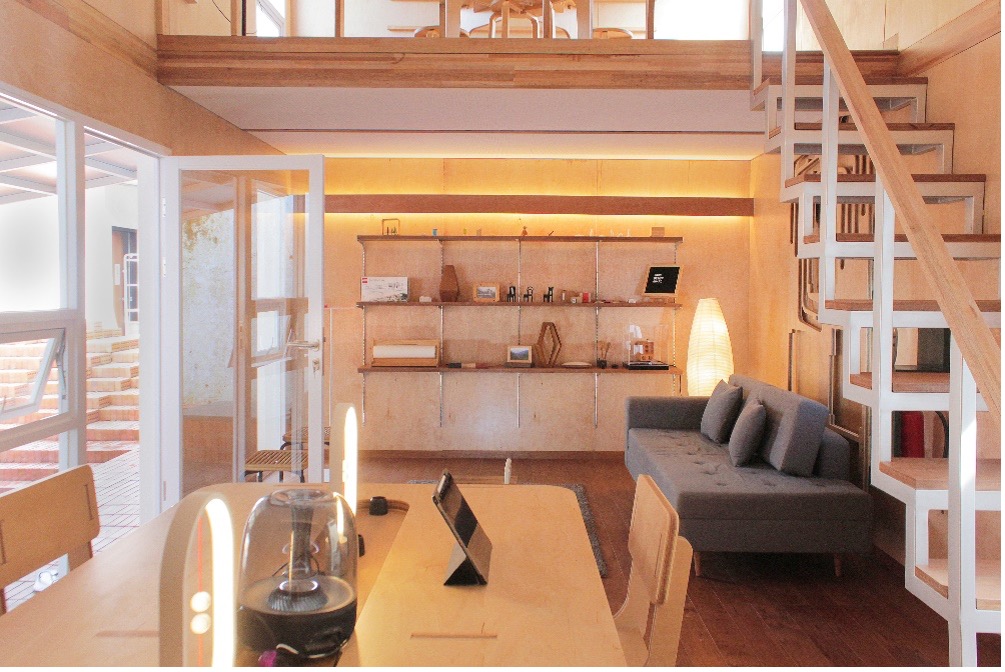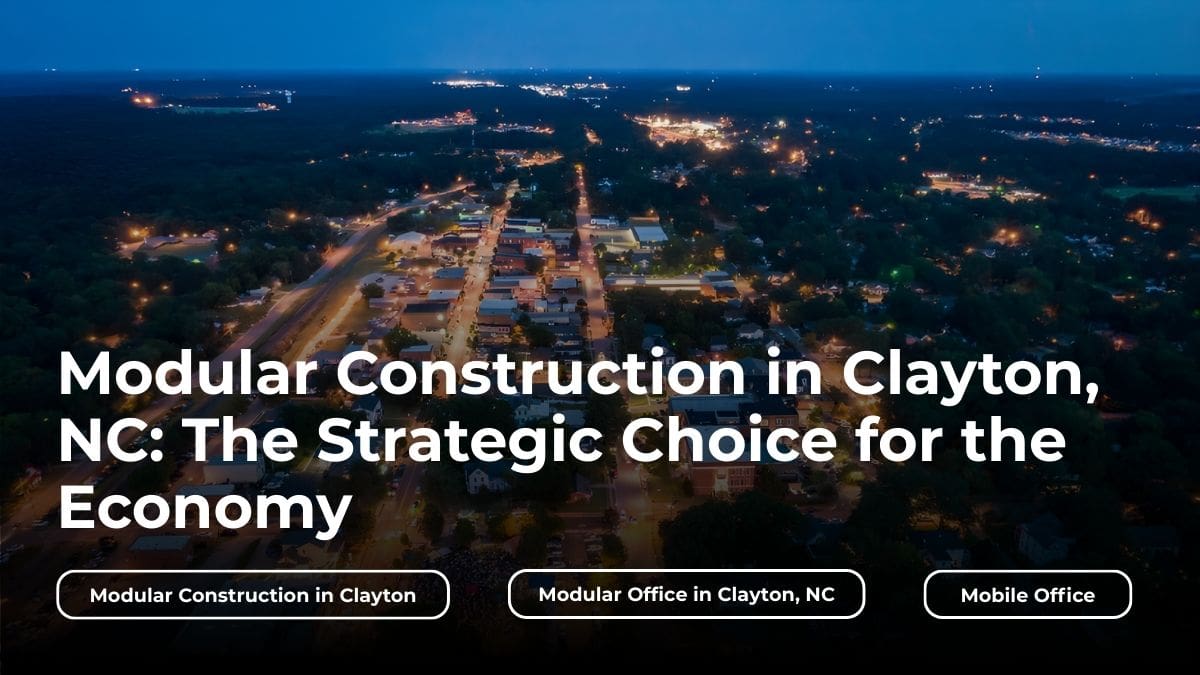Let us explore the cutting edge modular building designs to be thankful for this Thanksgiving. Forget the myths and stigma of yesteryear’s modular construction! Designers are currently demonstrating how modular construction may be used to create distinctive and site-specific structures. This considers the specifics of terrain, weather, and program. It also allows chances for the light of nature, ventilation, and landscapes while resulting in a design expression individual to its location and surroundings.
But can modular building also assist the construction sector in achieving its urgent and wildly ambitious sustainability targets? Modular building proponents contend this is true, claiming that their method can provide more social and environmental sustainability advantages than traditional building methods.
Modular Design Benefits
-
Decreased material waste
Comparing modular construction to conventional construction might lower net waste in half. Errors and accidental damage are less likely due to the fabrication facility’s optimal settings. Lean manufacturing principles and other techniques for better inventory control can be applied more effectively using factory-based modular construction procedures.
-
Reduced energy consumption during building
Due to manufacturers’ superior ability to manage energy consumption and emissions compared to conventional building sites, construction energy use decreases during the fabrication phase of a modular project. In addition, we will see a decrease in energy used onsite for items like worker transportation and housing, as well as for power tools, plant, and site-wide lighting because modular projects require fewer onsite employees for a much shorter time.
-
Support for reusing, recycling, and adaption
Buildings can be more quickly and economically adopted, modified, or disassembled into components that can be reused or deconstructed for recycling because of modular construction’s “plug and play” adaptability. A building can become more flexible and adaptable, and hence more future proof, by incorporating modularity at the systems level.
-
Enhanced and safer working environments
Modular construction in an offsite facility is typically safer for workers than traditional onsite construction. Workers at modular fabrication facilities are subject to fewer risks than those on a typical construction site, where they generally work outdoors, around heavy equipment, and at heights.
-
Significant construction cost reductions, improved productivity, and advantages in quality control
Modular building’s accelerated construction process generates most of its budgetary advantages. In most modular projects, the time needed to construct and commission a modular structure is reduced by 25% to 30%. Therefore costs associated with financing are also decreased as a result.
With modular construction, most of the fabrication and assembly of building components takes place in a controlled environment optimized for manufacturing. Therefore, design, manufacturing, and also construction processes are more closely integrated, capturing impossible efficiencies with conventional methods, and facilitating more effective quality assurance.
Cutting Edge Modular Building Designs
We’re not stopping with the technical stuff! In fact, the following collection of contemporary constructions demonstrates the pros of offsite construction. Onward to the list of cutting edge modular building designs!
Milan Expo 2015: Czech Republic
The Czech Republic Pavilion at the 2015 World Expo’s award-winning design by Chybik + Kristof is now complete. The simplicity of the modular design during construction and transportation led to its selection. The structure, which measures about 35,000 square feet, designed around a swimming pool as a homage to the advanced water treatment methods used in the Czech Republic. The 2015 Milan Expo will not mark the end of the Czech Republic pavilion’s existence because it is more than just an exhibition space.
Koma modules, a modular construction technique, were used to erect the building. In fact, water was included in the design, which was a challenge, and the result was spectacular. There are stores and a restaurant on the ground floor; exhibitions are on the first and second floors; and, of course, a garden is on the top.
For more details, you can check out the full article in Architect Magazine.
No Footprint House (NFH): Ojochal, Costa Rica
A-01’s gorgeously open and cross-ventilated Costa Rican No Footprint House is a model for a line of upcoming zero-carbon residences. The building uses a steel frame structure centered on a central service core and only uses environmentally friendly materials. An exterior timber panel of the building has an open and close feature to control views and exposure while it stands on the edge of a tropical jungle. Undeniably, the one-of-a-kind structure is entirely customizable and incredibly economical. This structure is easily constructed, disassembled, and also transported on the back of a single truck.
Hence, The 2019 A+Award for Architecture + Sustainability went to this impressive project.
For more details, you can check out the full article in Architizer.
121 W 3rd Street: Los Angeles, California
The prefabricated, modular design for Los Angeles high-rise residential buildings, each with its expressive style, is a project that Gensler is working on alongside the Relevant Group.
One is located at 121 West. Gensler is transforming a surface parking lot on Third Street into a 15-story modular apartment tower with 331 residential apartments on top of two above-grade levels and one below-grade level of conventional construction. Thirty-seven of the apartments are for very low-income affordable housing by Relevant.
For more details, you can all the three residential high-rises in Gensler’s full article.
Home-Office Pods AAND Sayana: Bandung, Indonesia
The creation of prefabricated modular home office AAND Sayana is in response to the global pandemic and its effects on workers. The construction of cross-laminated timber (CLT) building was in a factory and soon marketed as an earthquake-resistant construction. In addition, an on-grid solar panel system provides the building’s energy needs. Even the least skilled DIY craftsperson can readily construct the building by focusing on high-quality, local, also prefabricated materials.
For more details, you can check out the full article in Architizer.
Habitat 67: Montreal, Canada
Moshe Safdie
Moshe Safdie, FAIA, a young architect with a ground-breaking design for a fusion of the suburban single-family home and the urban apartment structure, was at the forefront of architecture in 1960. At McGill University in Montreal, he used the concept as the basis for his undergraduate thesis.
To create the apartments for the expo, Safdie constructed 365 modules in a factory and stacked them asymmetrically. The apartments ranged in size and kind from 600 square feet for one-bedroom apartments to 1,800 square feet for four-bedroom apartments. Every apartment in the building had a roof garden and a shared pedestrian street from which to enter.
Montreal and Canada revere Habitat 67 as a monument to architecture.
For more details, you can check out its home page.
Modular construction may be experiencing something of a rebirth to save costs and time while improving building quality.
Off-site building is the potential choice for highly remote, dense, or complex sites and an exciting and expressive design alternative for various building projects. An increasing number of designers and developers are starting to recognize modular solutions. It is only a matter of time before cutting-edge modular building designs, inventions and also creations completely replace conventional approaches.
When it comes to technological advancements and modular building, Aries is on the forefront of the market and keeps up with everything happening across the globe. Aries deserves the title of top modular provider thanks to our expanding dedication to the craft of modular construction. By utilizing only, the most groundbreaking modular building technology, Aries will work to give our clients only the best. Aries is ideal for everything from modular offices to schools to worker housing!
About Aries
Aries is a trusted name in all commercial modular space solutions and offers a variety of financing options for even the most difficult projects. Aries, a privately held company established in Houston, Texas, provides modular spaces for government, construction, commercial, medical, oil and gas, and educational projects through a network of locations around North America.
Nothing, in our opinion, is more important than consistently offering the best customer service, reliability, and innovation. Aries exalts our philosophy of working together to learn from our clients and ensuring the expansion of solutions that are mutually beneficial.
Visit www.ariesbuildings.com or give us a call at 1-888-598-8869 to learn more.
Let us explore the cutting edge modular building designs to be thankful for this Thanksgiving. Forget the myths and stigma of yesteryear’s modular construction! Designers are currently demonstrating how modular construction may be used to create distinctive and site-specific structures. This considers the specifics of terrain, weather, and program. It also allows chances for the light of nature, ventilation, and landscapes while resulting in a design expression individual to its location and surroundings.
But can modular building also assist the construction sector in achieving its urgent and wildly ambitious sustainability targets? Modular building proponents contend this is true, claiming that their method can provide more social and environmental sustainability advantages than traditional building methods.
Modular Design Benefits
-
Decreased material waste
Comparing modular construction to conventional construction might lower net waste in half. Errors and accidental damage are less likely due to the fabrication facility’s optimal settings. Lean manufacturing principles and other techniques for better inventory control can be applied more effectively using factory-based modular construction procedures.
-
Reduced energy consumption during building
Due to manufacturers’ superior ability to manage energy consumption and emissions compared to conventional building sites, construction energy use decreases during the fabrication phase of a modular project. In addition, we will see a decrease in energy used onsite for items like worker transportation and housing, as well as for power tools, plant, and site-wide lighting because modular projects require fewer onsite employees for a much shorter time.
-
Support for reusing, recycling, and adaption
Buildings can be more quickly and economically adopted, modified, or disassembled into components that can be reused or deconstructed for recycling because of modular construction’s “plug and play” adaptability. A building can become more flexible and adaptable, and hence more future proof, by incorporating modularity at the systems level.
-
Enhanced and safer working environments
Modular construction in an offsite facility is typically safer for workers than traditional onsite construction. Workers at modular fabrication facilities are subject to fewer risks than those on a typical construction site, where they generally work outdoors, around heavy equipment, and at heights.
-
Significant construction cost reductions, improved productivity, and advantages in quality control
Modular building’s accelerated construction process generates most of its budgetary advantages. In most modular projects, the time needed to construct and commission a modular structure is reduced by 25% to 30%. Therefore costs associated with financing are also decreased as a result.
With modular construction, most of the fabrication and assembly of building components takes place in a controlled environment optimized for manufacturing. Therefore, design, manufacturing, and also construction processes are more closely integrated, capturing impossible efficiencies with conventional methods, and facilitating more effective quality assurance.
Cutting Edge Modular Building Designs
We’re not stopping with the technical stuff! In fact, the following collection of contemporary constructions demonstrates the pros of offsite construction. Onward to the list of cutting edge modular building designs!
Milan Expo 2015: Czech Republic
The Czech Republic Pavilion at the 2015 World Expo’s award-winning design by Chybik + Kristof is now complete. The simplicity of the modular design during construction and transportation led to its selection. The structure, which measures about 35,000 square feet, designed around a swimming pool as a homage to the advanced water treatment methods used in the Czech Republic. The 2015 Milan Expo will not mark the end of the Czech Republic pavilion’s existence because it is more than just an exhibition space.
Koma modules, a modular construction technique, were used to erect the building. In fact, water was included in the design, which was a challenge, and the result was spectacular. There are stores and a restaurant on the ground floor; exhibitions are on the first and second floors; and, of course, a garden is on the top.
For more details, you can check out the full article in Architect Magazine.
No Footprint House (NFH): Ojochal, Costa Rica
A-01’s gorgeously open and cross-ventilated Costa Rican No Footprint House is a model for a line of upcoming zero-carbon residences. The building uses a steel frame structure centered on a central service core and only uses environmentally friendly materials. An exterior timber panel of the building has an open and close feature to control views and exposure while it stands on the edge of a tropical jungle. Undeniably, the one-of-a-kind structure is entirely customizable and incredibly economical. This structure is easily constructed, disassembled, and also transported on the back of a single truck.
Hence, The 2019 A+Award for Architecture + Sustainability went to this impressive project.
For more details, you can check out the full article in Architizer.
121 W 3rd Street: Los Angeles, California
The prefabricated, modular design for Los Angeles high-rise residential buildings, each with its expressive style, is a project that Gensler is working on alongside the Relevant Group.
One is located at 121 West. Gensler is transforming a surface parking lot on Third Street into a 15-story modular apartment tower with 331 residential apartments on top of two above-grade levels and one below-grade level of conventional construction. Thirty-seven of the apartments are for very low-income affordable housing by Relevant.
For more details, you can all the three residential high-rises in Gensler’s full article.
Home-Office Pods AAND Sayana: Bandung, Indonesia
The creation of prefabricated modular home office AAND Sayana is in response to the global pandemic and its effects on workers. The construction of cross-laminated timber (CLT) building was in a factory and soon marketed as an earthquake-resistant construction. In addition, an on-grid solar panel system provides the building’s energy needs. Even the least skilled DIY craftsperson can readily construct the building by focusing on high-quality, local, also prefabricated materials.
For more details, you can check out the full article in Architizer.
Habitat 67: Montreal, Canada
Moshe Safdie
Moshe Safdie, FAIA, a young architect with a ground-breaking design for a fusion of the suburban single-family home and the urban apartment structure, was at the forefront of architecture in 1960. At McGill University in Montreal, he used the concept as the basis for his undergraduate thesis.
To create the apartments for the expo, Safdie constructed 365 modules in a factory and stacked them asymmetrically. The apartments ranged in size and kind from 600 square feet for one-bedroom apartments to 1,800 square feet for four-bedroom apartments. Every apartment in the building had a roof garden and a shared pedestrian street from which to enter.
Montreal and Canada revere Habitat 67 as a monument to architecture.
For more details, you can check out its home page.
Modular construction may be experiencing something of a rebirth to save costs and time while improving building quality.
Off-site building is the potential choice for highly remote, dense, or complex sites and an exciting and expressive design alternative for various building projects. An increasing number of designers and developers are starting to recognize modular solutions. It is only a matter of time before cutting-edge modular building designs, inventions and also creations completely replace conventional approaches.
When it comes to technological advancements and modular building, Aries is on the forefront of the market and keeps up with everything happening across the globe. Aries deserves the title of top modular provider thanks to our expanding dedication to the craft of modular construction. By utilizing only, the most groundbreaking modular building technology, Aries will work to give our clients only the best. Aries is ideal for everything from modular offices to schools to worker housing!
About Aries
Aries is a trusted name in all commercial modular space solutions and offers a variety of financing options for even the most difficult projects. Aries, a privately held company established in Houston, Texas, provides modular spaces for government, construction, commercial, medical, oil and gas, and educational projects through a network of locations around North America.
Nothing, in our opinion, is more important than consistently offering the best customer service, reliability, and innovation. Aries exalts our philosophy of working together to learn from our clients and ensuring the expansion of solutions that are mutually beneficial.
Visit www.ariesbuildings.com or give us a call at 1-888-598-8869 to learn more.
Follow Us On Social Media!






